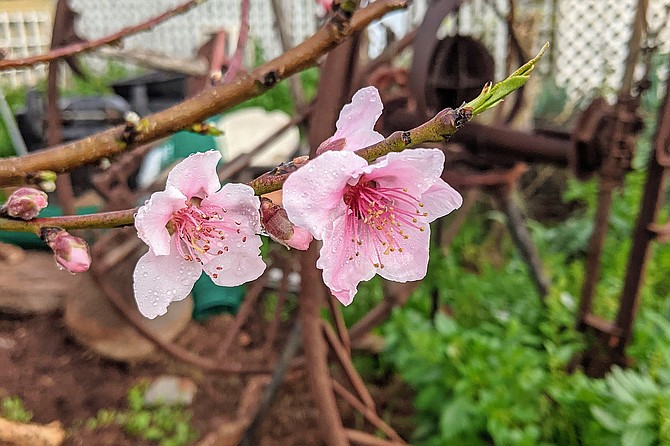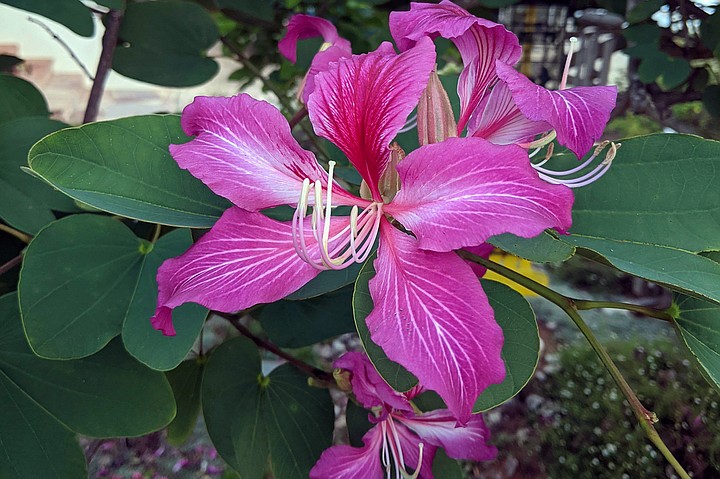 Facebook
Facebook
 X
X
 Instagram
Instagram
 TikTok
TikTok
 Youtube
Youtube

Ornamental Peach Trees, with radiant white and pink blossoms, are lighting up the manicured landscape in Balboa Park’s west side. These and other “stone-fruit” trees, with and without edible fruits, belong to the genus Prunus. Several native Prunus species contribute to San Diego County’s natural vegetation as well — among them, holly leaf cherry, choke cherry, desert almond, and desert apricot. The desert apricot, soon to bloom on the rocky hillsides of the Anza-Borrego Desert, attracts swarms of bees with its sweet smelling nectar.

Orchid Trees, now at their flamboyant best in front yards and public spaces throughout the city, are showing off their large, orchid like flowers in shades of pink, purple, and maroon. Orchid trees thrive in areas with a mild winter climate, hence their popularity in Hawaii, Southern California, and Arizona.

Ocean Water Temperatures, of late in the 50s Fahrenheit, are finally on the upswing this month as the daylight hours lengthen and the sun arcs higher overhead in the sky each day. It will take about five months of spring and summer sunshine before the local ocean’s enormous mass and large heat capacity fully responds to the input of solar energy. A maximum water temperature in the low- to mid-70s is expected by August or September.


Ornamental Peach Trees, with radiant white and pink blossoms, are lighting up the manicured landscape in Balboa Park’s west side. These and other “stone-fruit” trees, with and without edible fruits, belong to the genus Prunus. Several native Prunus species contribute to San Diego County’s natural vegetation as well — among them, holly leaf cherry, choke cherry, desert almond, and desert apricot. The desert apricot, soon to bloom on the rocky hillsides of the Anza-Borrego Desert, attracts swarms of bees with its sweet smelling nectar.

Orchid Trees, now at their flamboyant best in front yards and public spaces throughout the city, are showing off their large, orchid like flowers in shades of pink, purple, and maroon. Orchid trees thrive in areas with a mild winter climate, hence their popularity in Hawaii, Southern California, and Arizona.

Ocean Water Temperatures, of late in the 50s Fahrenheit, are finally on the upswing this month as the daylight hours lengthen and the sun arcs higher overhead in the sky each day. It will take about five months of spring and summer sunshine before the local ocean’s enormous mass and large heat capacity fully responds to the input of solar energy. A maximum water temperature in the low- to mid-70s is expected by August or September.
Comments